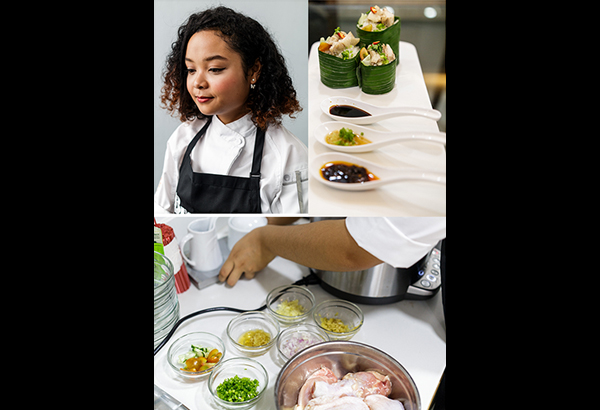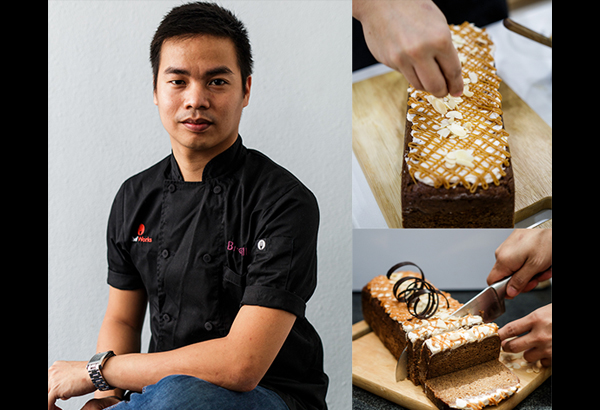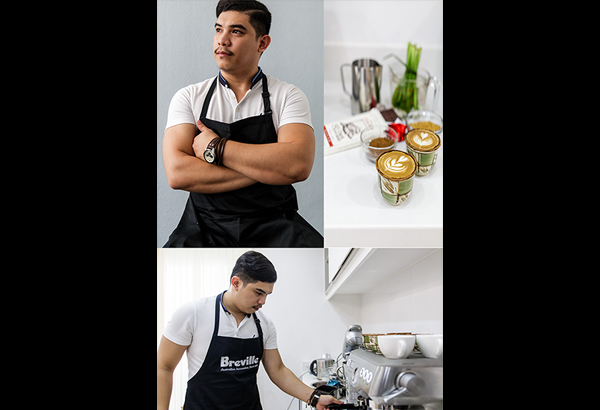Taste makers
MANILA, Philippines - We sometimes forget that the culinary arts are precisely that: a form of art. Perhaps it’s because we’d rather engorge ourselves with food than appreciate it for anything other than taste and value-for-money. But forgetting the “art” in “culinary arts” can also mean forgetting that the people who prepare our food are artists — as creative in their practice as painters, musicians, performers and designers. And as in any form of art, there is energy in youth — in young chefs with bright vision, big aspirations and unique ideas to bring to the kitchen. Louise Mabulo, Edward Mateo and Dave Dource are artists of that sort. They’re also the new brand ambassadors of Australian culinary appliance brand Breville, representatives of a new generation of culinary artists — young, driven and equipped with the tools for success.

Louise Mabulo, 18
Chef Louise Mabulo is only 18 years old but she’s already cooked up a long list of international awards and credentials, including that of Junior Master Chef finalist in 2011. Chef Louise hails from Camarines Sur, but grew up in the United Kingdom. At 15, she was accepted into the Watson Institute, where she graduated with a degree in Social Entrepreneurship. Today, chef Louise hosts workshops and cooking demos at her culinary lounge in CamSur, where she also runs a restaurant along the beach and looks after a farm which will soon be producing its own cacao for artisanal chocolates.
YOUNG STAR: How did you get into the culinary arts?
I was five years old when I first started liking to cook. I used to bake blueberry muffins in our house in the UK where I grew up. My uncle was a chef so he used to drag me into the kitchen, and I guess eventually it became a family thing. We all loved to cook, we all loved to spend time in the kitchen together and make all sorts of family meals.
Was your time in the UK a big influence on you as a chef?
I’m really a nationalistic kind of person; I love Filipino food. Although yes, I think the techniques and the finesse in terms of plating and cooking — the British cuisine and the British outlook on food really did affect me growing up.
Can you tell us about the dish you prepared?
It’s Hainanese chicken rice. It’s sort of traditional, but in a way it’s also modernized. It’s chicken and rice, which is steamed in an assortment of vegetables and spices, served in a banana leaf, and then topped with cilantro, tomatoes and cucumber, with traditional condiments on the side: dark soy sauce and ginger oil. I wanted something families could easily do at home for their kids, if you’re on the go, or if you’re simply in an enclosed space — like for example, if you live in an apartment or condominium, you don’t have much cooking space. So I wanted recipes where it’s all in one pot. So you could present it nicely and it’s really easy to make.

Edward Mateo, 28
Edward Mateo just wanted to buy some fireworks. Back in his high school days, Edward was so fond of the New Year festivities that he baked and sold banana cakes in the Christmas season so he could save enough to light the sky on the first of January. But baking those cakes brought Edward to his passion: pastries. After graduating from Centro Escolar University with a degree in HRM, Edward went on to apprentice under the chef of Malacañang Palace, eventually finding work as a pastry chef at EDSA Shangri-la, and then at Pico de Loro’s Hamilo Coast. When he finally decided to branch out to start his own business, Edward put up La Royale Patisserie, La Royale Kitchen Studio, and La Royale Commissary. These ventures have since earned him several awards and recognitions, including the opportunity to bake for Resorts World Manila.
YOUNG STAR: Do you have a signature pastry, or a style of baking you prefer?
I want a twist on pastries. I want to construct it. I want something new and innovative lagi, to make a new flavor, a new balance of taste. I always make different kinds of pastries.
What have you learned in your five years as a pastry chef?
First is to be humble. Second is to be innovative with different kinds of ingredients. Don’t focus on one ingredient. Especially now here in the Philippines, we have new ingredients from the different provinces like the kinds of chocolates from Davao. We can use those — not the chocolates from the States or other countries. We need to use our local ingredients.
Can you tell us about the cake you prepared?
This moist banana cake is an eggless banana cake. We use sour cream to activate the baking soda and the baking powder — the leavening agents — because of the acidity of the sour cream. This dish comes from (my time at) Pico de Loro. Ito yung ginagawa namin at that time. Inadopt ko ‘to, but now we put cream cheese on top with cinnamon powder and almonds.

Dave Dource, 28
Of the many people who so publicly proclaim their love of coffee (“I need #coffee in my life,” or “I can’t function without #coffee”), how many actually know anything about their beloved black beverage? Dave Dource definitely does. He’s an award-winning barista and latte artist, which are actually two different things: baristas prepare coffee and know the drink in its entirety, while latte artists specialize in froth design. He is also certified by coffee institutions in America and Europe and is on a mission to preach the good word about specialty coffee in the Philippines. Dave started out as a mechanical engineer for a company that distributed coffee machines. But as he got to know the machines he fixed, he became enamored with the drink they produced. Today, when he’s not throwing down at latte art competitions, Dave is a consultant for many different coffee shops, while also setting up his own roastery in Quezon City.
YOUNG STAR: What does is take to be a good barista?
You need to be knowledgeable about your coffee. The elevation of the coffee, where it’s planted, the soil quality, the water quality, the wind patterns — you need to know those things. Different countries have different taste profiles in their coffee. If you go to Africa, they’re well known for lemony acidity, winey flavors, very floral and light-bodied coffee. If it’s Central America, it’s very fruity. Here in the Philippines, it’s more like a woody flavor.
What advice do you have for young people looking to become baristas or latte artists?
Learning about coffee and being a barista is not complicated, but it’s also not easy. Because you just focus on one thing — you just need to know the origin of the coffee, how to prepare it, the standard procedures. And also, you need to practice your communication skills. Being a barista is offering the coffee, talking to the customer — it’s not just preparing it and giving it to the customer.
Can you tell us about the drink you prepared?
It’s a local coffee beverage — we call it café mocha de batirol. I use local coffee from Davao, and I also use Malagos chocolate. I use a blend of Arabica from Benguet and Robusta from Cavite. You need to melt the dark chocolate with hot water. I use a six-ounce cup, and we’re going to put in half an ounce of that chocolate and one ounce of your espresso. You add a quarter ounce of coconut sugar. Then you have to steep pandan leaves, for the aroma. Then you steam the milk and then you pour it.
Photos by JL JAVIER
Produced by MARGA BUENAVENTURA
Sittings by NEAL CORPUS















